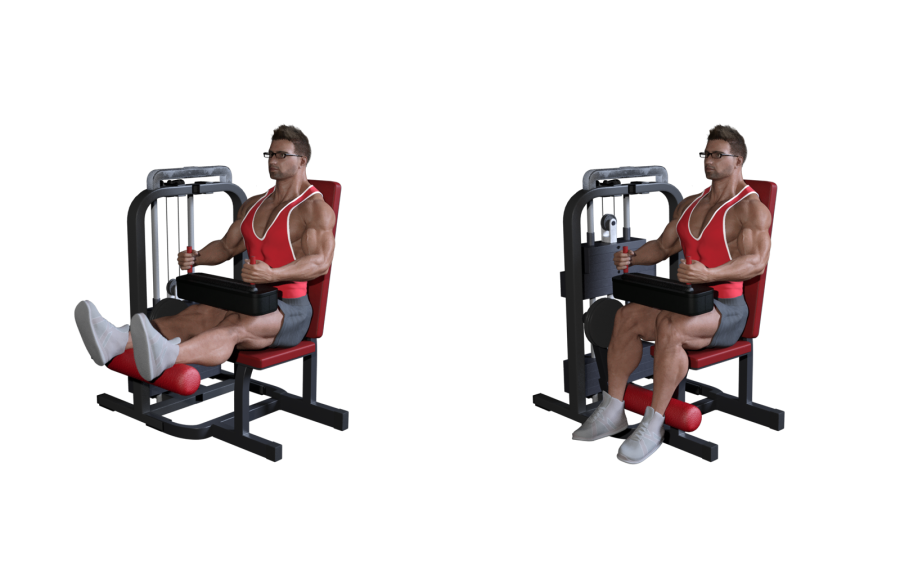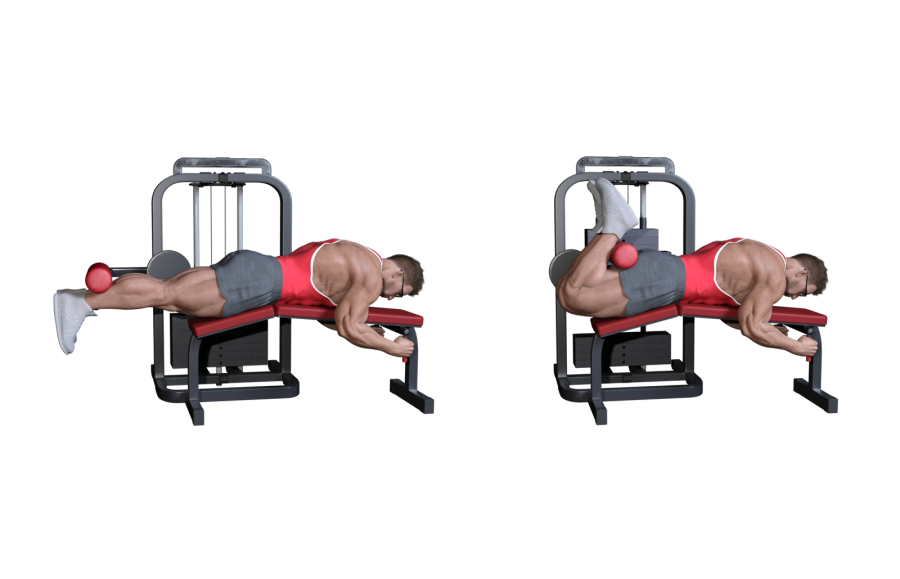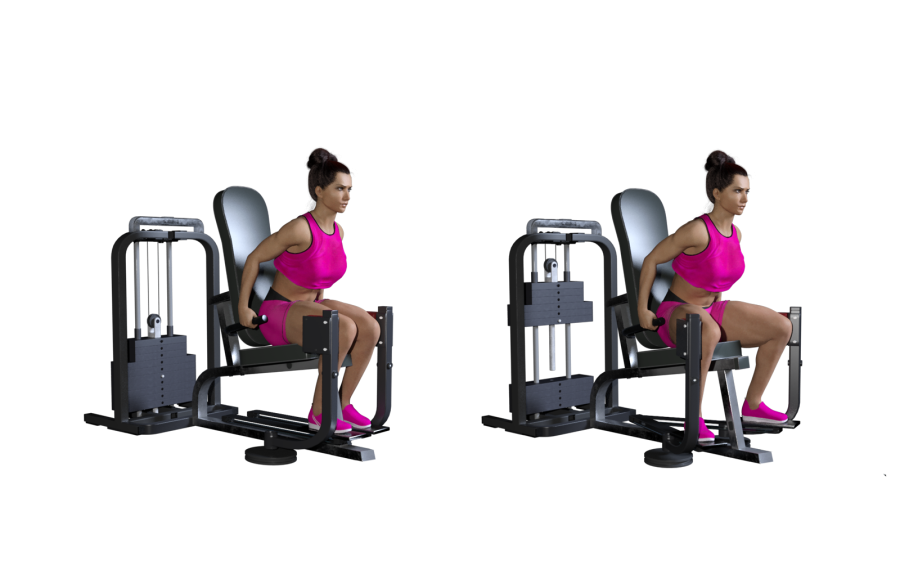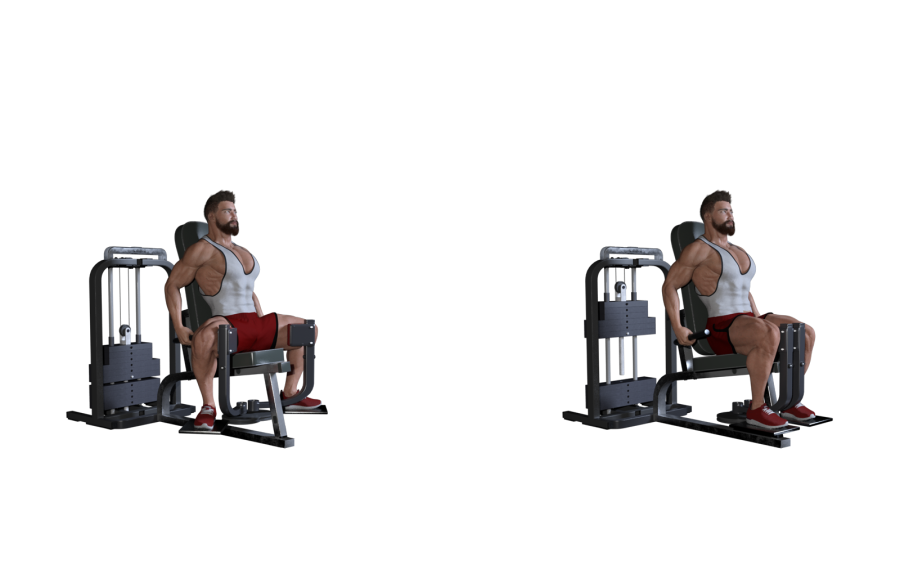The Daily Grind
Sample Lower Body Workout

These Workouts Will Only Work If You Do.
Longer Rest = Challenge Yourself Every Set.
What should you do during the longer rest intervals?
Stretch muscle groups you are not training.
Additionally, we advise stretching post workout, every workout, for at least 5 minutes.
Key Terminology
Warm Up
It is recommended you perform a small cardio warm up for roughly 5-10 minutes. This should be low intensity like walking or the elliptical machine. The goals are to elevate your heart rate, body temperature, and get blood flowing to your muscles.
Then, perform mobility work and movement specific warm up exercises. For example, if hack squats are listed first, do some bodyweight squats and leg swings to loosen your hips and a set or 2 of hack squats using lighter weight before you attempt the reps listed for the workout. Our goals for this portion of the warm up are to improve your mobility, prime your stability muscles that will assist during the lifts, and practice your movement coordination. Only after your muscles are warmed up, movements feel comfortable, and you’ve attempted lighter weight exercises should you begin the workout.
All sets listed in the workout plan are working sets meaning you should already be warmed up and each set, you should challenge yourself. Once you’re warmed up after the first exercise, you don’t need to do light weight warm ups before the other exercises; you’re already rocking and rolling. However, if you’re unfamiliar with how to do a particular exercise and you’ve never done it before, please do at least 1 set with lighter weight to gain familiarity with the movement.
Do not perform static stretches with the muscles you’re about to train during your warm up (don’t hold leg stretches as this can reduce performance). If you stretch your legs, glutes, or calves, make sure your muscles are moving as they stretch (dynamic stretching). My personal favorite stretch for leg days is to lower to a deep squat stance and slowly rock back and forth. You can perform some dynamic stretches throughout your workout if you feel your body is still a little tight. You can also perform some static stretches with the muscles you’re not training between the longer rest intervals if you’re up for it. You can stretch muscles of the upper body during the longer rest intervals but again, only if you’re up for it. Make sure your primary focus is a high quality leg workout.
How heavy should you lift?
Perform all sets besides the sets that say “/dropset” within 1-3 reps of failure. This means if 4 sets are listed and the 4th set has “/dropset” at the end, take the first 3 sets to almost failure (maybe you could squeeze out between 1-3 more reps) and the 4th set to muscular failure. We want you to keep between 1-3 reps in reserve if the set does not have “dropset” at the end. Therefore, if you think you could squeeze out 4 more reps, then increase the weight! If you’re failing at rep 9 and the set demanded you do 12 reps, then lower the weight. The vast majority of your sets will be to almost failure.
Example
Bench Press (Barbell)
Listed Reps = 12, 10
Set 1 perform 12 reps; maybe 13-15 would be true failure. Remember, keep 1-3 reps left in the tank. Pick a weight where you think you could do 13-15 reps.
Set 2 perform 10 reps; maybe 11-13 would be true failure. Pick a weight where you think you could do 11-13 reps. You might need to increase the weight from last set because fewer reps are listed.
Incline Bench Press (Barbell)
Listed Reps = 8, 6
Set 1 perform 8 reps; maybe 9-11 would be true failure. Pick a weight where you think you could do 9-11 reps.
Set 2 perform 6 reps; maybe 7-9 would be true failure. Pick a weight where you think you could do 7-9 reps. You might need to increase the weight from last set because fewer reps are listed.
Chest Flies (Machine)
Listed reps = 12, 10/dropset
Set 1 perform 12 reps; maybe 13-15 would be true failure. Pick a weight where you think you could do 13-15 reps.
Set 2 is the last set and /dropset is listed. Take this to true muscular failure. Strive for at least 10 reps, then when you reach failure, perform a dropset. A dropset means you after you reach failure with good form, immediately reduce the weight by roughly half and crank out more reps to failure again!
If the “/dropset” is added after a set, that set demands a dropset. If a dropset is listed, it’s used only on the last set. If 3 sets are listed, never do a dropset after sets 1 or 2.
Dropset
Immediately lower the weight by about 30-50% after reaching muscular failure and continue doing more reps at the lighter weight. There is NO stop in between meaning go to failure at the heavier weight, reduce the weight as quickly as possible, and go to failure again with the lighter weight.
Example
Let’s say you’re using 200 pounds on the last set of calf raises. The last set has 8 reps listed (you think you will hit failure around 8 reps using 200 pounds). After you go to failure, immediately lower the weight to anywhere between 140-100 pounds. It doesn’t have to be precise, and often times the first weight that catches your eye when you look at the weight stack is what you’ll choose. Let’s say you picked 100 pounds. Right after you switch from 200 pounds to 100 pounds, immediately start cranking out reps at 100 pounds and go to failure again. Warning – ouchies will occur.
AMRAP
As many reps as possible; take this set to failure. If two sets are listed with “AMRAP”, then take them both to failure. AMRAP sets are used frequently on ab exercises. Note that you shouldn’t be doing more than 25-30 reps. If you’re doing more than 25-30 reps, then find a way to make the exercise more challenging by increasing the time under tension and control of each rep, squeezing harder, or adding weight. Always be in control of your movements.
Form
Always control the weight over the full range of motion and never sacrifice form to lift heavier. If you’re doing a set and can no longer maintain good form with strict control of the weight you’re using, the set is over.
Listen To Your Body
Don’t feel obligated to do every set in the workout if your body is fatigued. Strive for high quality work and when the quality drops, move onto the next exercise. We don’t know your mood, what your day has been like, if you’re in a calorie surplus or deficit, your general activity level, and whether or not your gym crush is in the gym; all of these factors influence your training volume.
If 5 sets are listed for a specific exercise and you’re completely drained after 3 or 4 sets and can no longer maintain the weight you’re using or use the heavier weight with good form, then move onto the next exercise. Let’s stimulate, not obliterate our muscles.
On the contrary, if you’re feeling amazing and want to add one extra set to a specific group of exercises, go right ahead. However, please don’t add more than 1-2 sets total for the entire workout. If you want more work, amplify your focused aggression and lift heavier. Make each set count rather than add more sets. Quality trumps quantity. Don’t add excessive volume and cause unnecessarily high muscle damage. Your muscles grow better when damage is lower [1]. The protein you eat goes toward building new muscle rather than repairing your current damaged muscle.
Listen to your body. You know yourself the best. Let’s work smart and hard to achieve our goals.
Rep Tempo
Unless the tempo is specified, lift at a natural speed where you’re in total control of each movement. Never purposely slow things down too much or speed things up by swinging the weight in an uncontrolled manner.
Exercise Order
Try to stick to the exercise order. If someone is on a machine or piece of equipment you need, ask to work in. In the gym we all have one goal – get better. I’m sure they’ll understand and share your appetite for success.
References
- Damas, F., Libardi, C. A., & Ugrinowitsch, C. (2018). The development of skeletal muscle hypertrophy through resistance training: the role of muscle damage and muscle protein synthesis. European journal of applied physiology, 118(3), 485-500.







